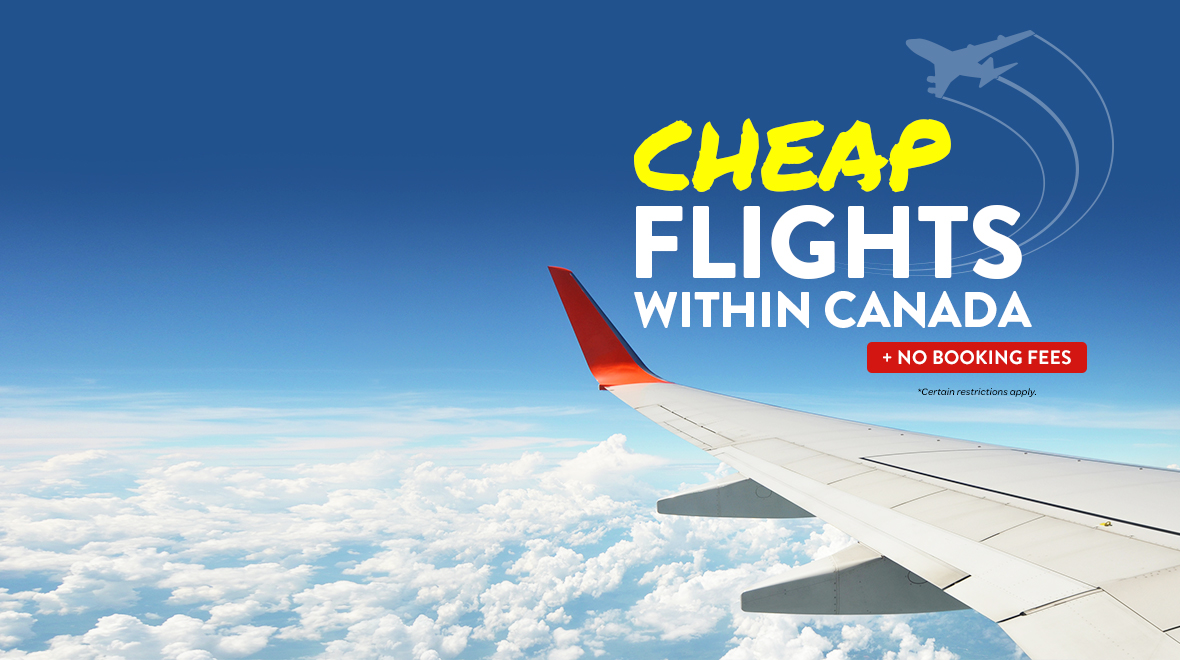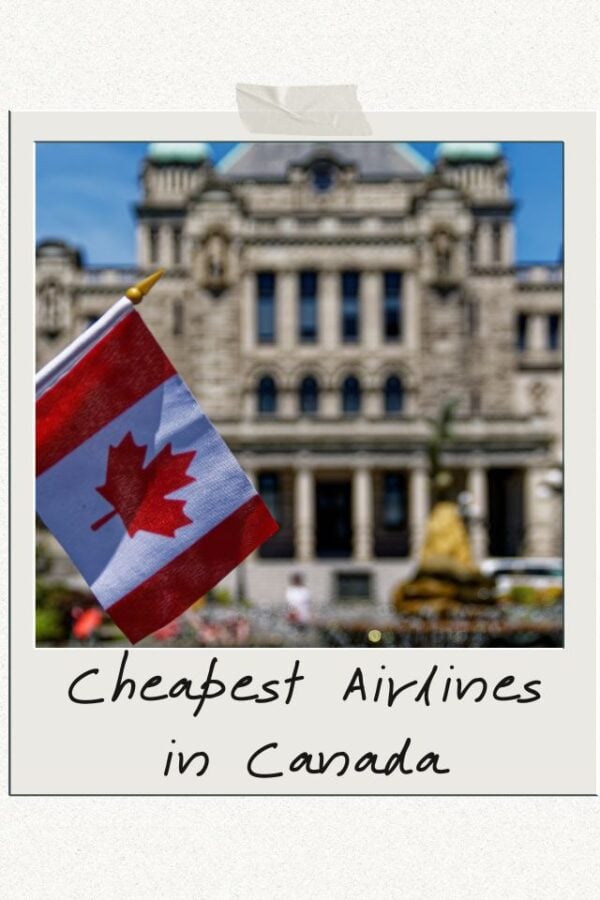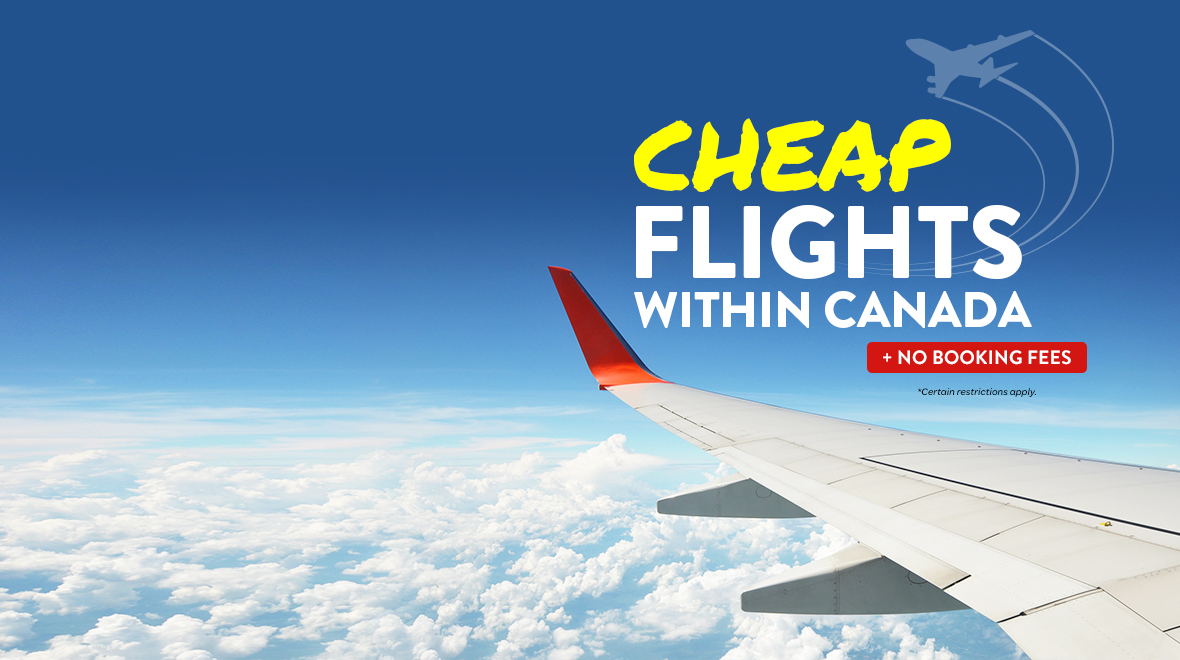
Canada, the land of breathtaking landscapes, vibrant cities, and famously friendly people, often conjures images of expansive budgets. But exploring this vast and diverse nation doesn’t have to break the bank. With a little savvy planning and a focus on affordable travel strategies, you can chase your maple dreams without emptying your wallet. This guide will equip you with the knowledge you need to snag cheap flights to Canada, discover its top attractions, understand its rich history, navigate its diverse regions, and make the most of your budget-friendly adventure.
Scoring Cheap Flights to Canada: Your Arsenal of Tricks
Finding affordable flights is the cornerstone of any budget trip. Here’s how to maximize your chances of finding a steal:

Related Articles about Chasing Maple Dreams on a Budget: Your Guide to Affordable Flights and Canadian Adventures:
- Switzerland: A Land of Enchantment – Exploring the Top Attractions and Planning Your Perfect Trip
- Unveiling Qatar: A Guide to Exploring the Pearl of the Gulf
- The Rainbow Nation Beckons: Your Ultimate Travel Guide to South Africa
- Journey to the Crossroads: A Comprehensive Guide to Traveling Georgia
- Oman: A Tapestry of Ancient Wonders and Modern Luxuries
- Be Flexible with Dates and Destinations: This is the golden rule of cheap travel. Use flight search engines like Google Flights, Skyscanner, or Momondo and explore the "flexible dates" option. Consider flying mid-week (Tuesdays and Wednesdays are often cheapest) or during the shoulder seasons (spring and fall). Also, be open to flying into different airports near your desired destination. For example, if you want to visit Toronto, consider flying into Hamilton International Airport (YHM) instead of Toronto Pearson International Airport (YYZ).
- Embrace the "Incognito Mode" Trick: Airlines often track your searches and may inflate prices if they see you’re repeatedly looking for the same flight. Browse in incognito mode or clear your browser’s cookies before searching for flights.
- Set Price Alerts: Most flight search engines offer the option to set up price alerts. This way, you’ll be notified immediately when the price of a flight to your chosen destination drops.
- Consider Budget Airlines: While Canada doesn’t have a plethora of budget airlines like Europe, carriers like Flair Airlines, Swoop, and Lynx Air often offer significantly cheaper fares, especially for domestic routes. Be aware of baggage fees and other add-ons, as these can quickly add up.
- Book in Advance (but not too far in advance): While booking last minute can sometimes yield unexpected deals, it’s generally best to book flights at least 2-3 months in advance for international travel. Avoid booking during peak seasons like summer and the Christmas holidays.
- Look for Package Deals: Sometimes bundling your flight with accommodation or car rental can result in significant savings. Websites like Expedia, Travelocity, and Booking.com often offer package deals.
- Explore Alternative Airports: Consider flying into a smaller airport near your destination. For example, if you’re visiting Vancouver, flying into Abbotsford International Airport (YXX) could be cheaper than flying directly into Vancouver International Airport (YVR).
- Red-Eye Flights and Layover Strategies: Embrace the red-eye flight if you can handle it. They’re often significantly cheaper than flights during peak hours. Similarly, longer layovers, especially in less popular airports, can also bring down the overall cost.
- Leverage Loyalty Programs: If you travel frequently, sign up for airline loyalty programs and collect miles. These miles can be redeemed for free flights or upgrades.

Canada’s Must-See Attractions: A Budget-Friendly Bucket List
Canada offers a diverse range of experiences, many of which can be enjoyed without spending a fortune:
- National Parks: Canada’s national parks are a natural treasure. From the majestic Rocky Mountains in Alberta (Banff, Jasper, Yoho) to the rugged coastlines of Nova Scotia (Cape Breton Highlands), the parks offer hiking, camping, wildlife viewing, and breathtaking scenery. Consider purchasing a Parks Canada Discovery Pass for unlimited access to all national parks, national marine conservation areas, and national historic sites for a year.
- Niagara Falls: Witness the raw power and beauty of Niagara Falls, one of the world’s most famous waterfalls. While the surrounding area can be touristy, enjoying the falls themselves is free. Walk along the Niagara Parkway, take a boat tour (for a fee), or explore the charming town of Niagara-on-the-Lake.
- Quebec City: Step back in time in Quebec City, a UNESCO World Heritage site. Explore the cobblestone streets of Old Quebec, admire the Château Frontenac, and soak in the city’s European charm. Many historical sites offer free or low-cost admission.
- Vancouver: Nestled between the mountains and the sea, Vancouver is a vibrant city with a thriving arts and culture scene. Explore Stanley Park, a sprawling urban oasis, walk across the Capilano Suspension Bridge (admission fee), or wander through Granville Island Market.
- Montreal: Known for its vibrant arts scene, delicious food, and European flair, Montreal is a city that appeals to all senses. Explore Old Montreal, visit the Montreal Museum of Fine Arts (free on the first Sunday of each month), and sample local delicacies like poutine and smoked meat.
- Canadian Rockies: The Canadian Rockies are a must-see for any nature lover. Hike through stunning mountain trails, marvel at turquoise lakes like Lake Louise and Moraine Lake, and spot wildlife like elk, deer, and bears (remember to practice bear safety!).
- Toronto: Canada’s largest city, Toronto, is a multicultural hub with a diverse culinary scene and world-class attractions. Visit the CN Tower (admission fee), explore the Distillery District, and catch a show in the Entertainment District. Many museums offer free admission on certain days or evenings.
- The Maritimes (Nova Scotia, New Brunswick, Prince Edward Island): Explore the charming coastal towns, picturesque fishing villages, and stunning beaches of Canada’s Maritime provinces. Enjoy fresh seafood, explore historic sites, and soak in the relaxed maritime culture.
- Free Activities: Many Canadian cities offer free walking tours, free museum days, and free outdoor concerts during the summer months. Check local event listings for free activities and attractions.
A Glimpse into Canadian History: Understanding the Past
Understanding Canadian history adds depth to your travel experience:
- Indigenous Peoples: Canada has a rich and diverse Indigenous history, predating European colonization by thousands of years. Learn about the cultures, traditions, and histories of the First Nations, Inuit, and Métis peoples. Visit Indigenous cultural centers and museums to gain a deeper understanding.
- European Colonization: Canada was colonized by both the French and the British, leading to a unique blend of cultures and traditions. Explore the historic sites and architecture of Quebec City to see the influence of French colonization, and visit the historic sites of Halifax and Toronto to see the impact of British colonization.
- Confederation: Canada became a self-governing dominion within the British Empire in 1867. Learn about the Fathers of Confederation and the process that led to the creation of Canada as a nation.
- World Wars: Canada played a significant role in both World Wars, sending troops and resources to support the Allied cause. Visit war memorials and museums to learn about Canada’s contributions to these conflicts.
- Multiculturalism: Canada is known for its multiculturalism, welcoming immigrants from all over the world. Explore the diverse neighborhoods of cities like Toronto and Vancouver to experience the richness of Canada’s cultural mosaic.
Travel Tips for Budget-Conscious Explorers:
- Accommodation Alternatives: Skip expensive hotels and consider hostels, Airbnb, or camping (if you’re visiting during the warmer months).
- Self-Catering: Prepare your own meals whenever possible. Grocery stores are readily available, and cooking your own food can save a significant amount of money compared to eating out.
- Free Walking Tours: Many cities offer free walking tours led by knowledgeable locals. This is a great way to get your bearings and learn about the city’s history and culture.
- Public Transportation: Utilize Canada’s public transportation systems, including buses, trains, and subways. Purchase day passes or weekly passes for unlimited travel within a specific city.
- Student Discounts: If you’re a student, take advantage of student discounts at museums, attractions, and transportation services.
- Free Wi-Fi: Take advantage of free Wi-Fi at libraries, cafes, and public spaces to stay connected without incurring data charges.
- Pack Appropriately: Be prepared for varying weather conditions. Even in the summer, temperatures can fluctuate, especially in mountainous regions. Pack layers of clothing, including a waterproof jacket.
- Embrace the Outdoors: Canada offers endless opportunities for outdoor activities, many of which are free. Go hiking, biking, swimming, or simply relax in a park.
- Learn Basic Phrases: If you’re visiting Quebec, learning a few basic French phrases will be greatly appreciated by locals.
- Be Aware of Tipping Culture: Tipping is customary in Canada, typically 15-20% for good service in restaurants, bars, and taxis.
Accommodation Options for Every Budget:
- Hostels: Hostels offer budget-friendly accommodation, often with dorm rooms and shared facilities. They’re a great option for solo travelers and backpackers.
- Airbnb: Airbnb offers a wide range of accommodation options, from private rooms to entire apartments. It can be a more affordable option than hotels, especially for longer stays.
- Camping: Camping is a popular option for budget travelers, especially during the summer months. Canada has numerous campgrounds in national parks and provincial parks.
- Budget Hotels: Look for budget hotel chains or independent motels that offer affordable rates.
- University Residences: Some universities offer accommodation in their residences during the summer months when students are away. This can be a surprisingly affordable option.
Getting Around Canada: Transportation Strategies:
- Public Transportation: Utilize public transportation systems in cities, including buses, subways, and streetcars.
- VIA Rail: VIA Rail is Canada’s national passenger rail service, offering a scenic way to travel between major cities. Look for discounted fares and seat sales.
- Bus Travel: Bus companies like Greyhound and Megabus offer affordable transportation between cities.
- Car Rental: Renting a car can be a good option if you want to explore more remote areas or national parks. Book in advance and compare prices from different rental companies.
- Hitchhiking: While not always recommended, hitchhiking is legal in some parts of Canada. Use caution and exercise common sense if you choose to hitchhike.
- Cycling: Many Canadian cities have extensive bike lanes and trails, making cycling a great way to get around.
Best Time to Visit Canada: Seasonal Considerations:
- Summer (June-August): Summer is the peak tourist season, with warm weather and long days. It’s a great time for outdoor activities, but expect higher prices and more crowds.
- Fall (September-October): Fall is a beautiful time to visit Canada, with stunning fall foliage. The weather is cooler, but the crowds are smaller and the prices are lower.
- Winter (November-March): Winter is a magical time to visit Canada, especially if you enjoy winter sports like skiing and snowboarding. Be prepared for cold temperatures and snow.
- Spring (April-May): Spring is a shoulder season, with mild weather and fewer crowds. It’s a good time to visit if you want to avoid the peak season rush.
Canada offers a wealth of experiences for every traveler, regardless of budget. By following these tips and embracing a spirit of adventure, you can create unforgettable memories without breaking the bank. So, start planning your Canadian adventure today and prepare to be amazed by the beauty and diversity of this incredible nation!





